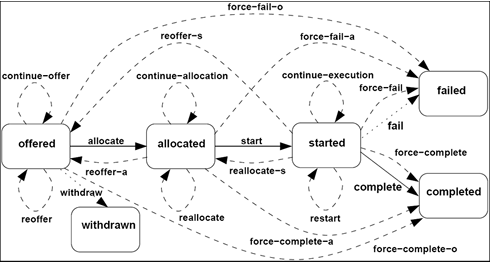Below are the common RESTful API standards that we should follow when designing our API's
Keep your base URL simple and intuitive
Keep verbs out of your base URLs
Never use /getDogs or /createDogs
Use HTTP verbs to operate on the collections and elements
POST, GET, PUT, DELETE is CRUD (Create-Read-Update-Delete)
Use Plural nouns
/dogs /deals /quotes
Concrete names are better than abstract
Instead of /items be more specific like /blogs /videos
Number of resources - preferably between 12 to 24
Simplify the Relationship and Association between
Resources
GET /owners/5678/dogs
POST /owners/5678/dogs
Keep complexity behind the ‘?’
GET /dogs?color=red&state=running&location=park
Have a good error design
Aligning errors with HTTP status codes
200 - OK
400 - Bad Request from client
500 - Internal Server Error
304 - Not Modified
404 – Not Found
401 - Unauthorized
403 - Forbidden
Provide a more granular error message
{"status" : "401", "message":"Authentication
Required","code": 20003}
Versioning is mandatory
Always use v and never have minor version like v1.0. Ideal
is v1, v2
Have version all the way to the left (highest scope):
/v1/dogs
Maintain at least one version back
Follow proper cycle for deprecating and retiring the API
Response content type, OAuth etc must go into the header
information which doesn't change the logic for each response
goes into the header
Extra optional fields must be requested in a
comma-delimited list
/dogs?fields=name,color,location
Pagination is a must for resource API's
Use limit and offset.
/dogs?limit=25&offset=50
default pagination is limit=10 with offset=0
For Non-Resource API's: Use verbs not nouns
/convert?from=EUR&to=CNY&amount=100
/translate?from=EN&to=FR&text=Hello
Request format - support multiple if possible
Default should be JSON, but support XML if possible
Use the pure RESTful way with the header, Accept:
application/json
Use standard Java/Javascript naming convention for
attributes
example: createdAt, firstName
Search within a resource: use ?q=
/owners/5678/dogs?q=fluffy+fur
Have all API's in single store and under one domain
api.mycompany.com
Option to Supress error codes
Always sent HTTP 200, even in case of errors.
&suppress_response_codes=true
Authentication : Use OAuth 2.0
In addition to the atomic API, provide composite API's as
well if required - if there is a need
This will avoid applications making multiple calls per
screen.
Complement the API with code libraries and a software
development kit (SDK)
Note: These are not the only standards and there may be variations. These are the standards which are followed my many and works for them.
